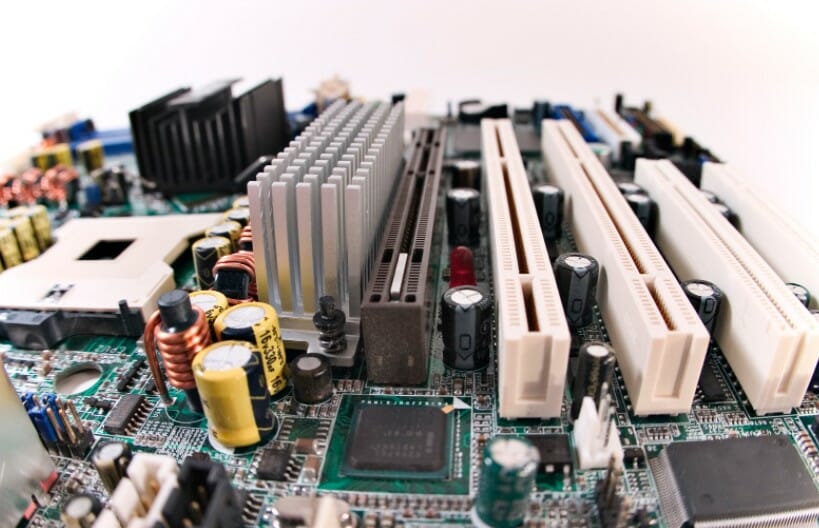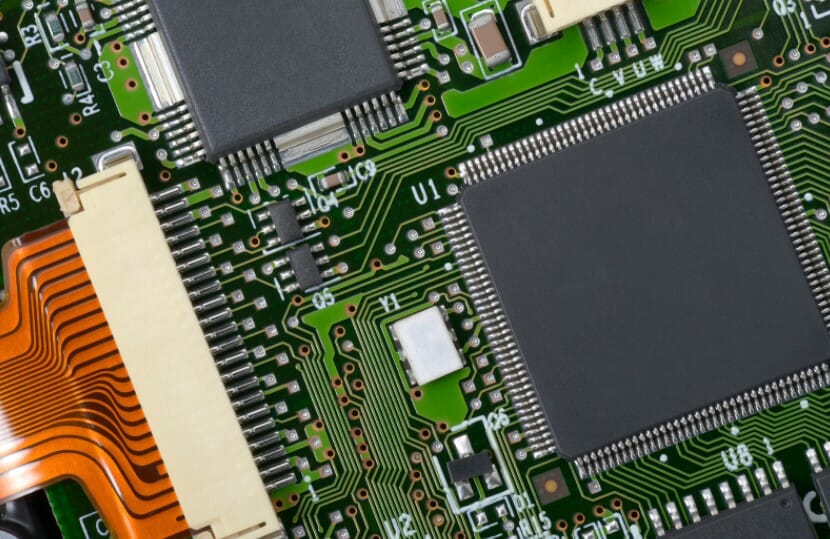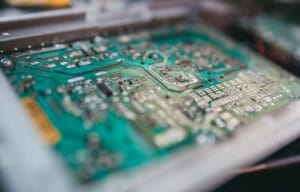Table of Contents
To replace a motherboard, you first need to select a new motherboard, then remove the old one and install the new one.
We outlined all the steps below.
Removing the old motherboard
- Shut down the computer and unplug any external cable attached to it.
- Open your computer's case to expose the motherboard. Identify which motherboard you have. You may need to take a picture before you begin dismantling components here so that you may remember how the elements align when reinstalling them.
- Remove the Wi-Fi cards and graphics cards from the motherboard first.
- Proceed to remove SATA and all interface cables connecting the hard drive, optical media drive, or SSD to the motherboard.
- Go on to unplug all power cables connected to your motherboard. At the top of the motherboard, there is a smaller 8-pin CPU power connector, and to the left side of the motherboard nearing the center, there is a larger 24-pin ATX power connector. Disconnect both of them before proceeding.
- Using your Phillips-head screwdriver, remove all screws that hold the old motherboard in position at the mounting points in the case of the computer. Keep the screws well because you'll need them again.
- The motherboard can be freely removed at this point. Pull it out and remove the CPU, CPU cooler, and RAM from it. You will install these components on the new motherboard. Be careful when dismantling these components, as they can get damaged easily.
Installing the New Motherboard
- After this, you're set to install your new motherboard. You'll need to reinstall every component you dismantled back in place. Make use of the picture you took at the beginning of the process.
- Remove any dirt that might have been deposited after removing the motherboard by brushing them off using a brush.
- Compare the I/O templates between the old and the new motherboards. If the old template matches the new motherboard's port layout, you can leave it in place. But, if they don't match, you'll have to remove and replace the old template with a new one. Gently press the template until it snaps off.
- Check the back ports like VGA or DisplayPort, of the newly installed motherboard to ensure they match with the new I/O template. Put the new template into position.
- Align the template to fit the case design. Proceed to gently press the template along the edges so that it rests on the cutout. While positioning the template into position, take care not to bend it so that the template holes align to the motherboard external connectors.
- After installing the I/O template, put the motherboard into position. Ensure that the motherboard's connectors align with the corresponding holes on the I/O template. Ensure that no grounding tab stretches into the panel’s jacks. Be careful with the USB ports because they are easily affected by this issue. If your USB port is affected by this issue, it can distort the motherboard causing the PC to fail to start.
- Remove unnecessary brass standoffs, then put new ones to every hole in the motherboard. Use a 5 mm nut driver to drive in the standoffs with ease.
- Tighten the standoffs enough to hold in position.
- Cross-check the motherboard to ensure that there is a corresponding standoff on every motherboard mounting hole. Also, ensure that all the standoffs you install correspond to the motherboard mounting hole.
- Install your processor and RAM to the motherboard.
- Plugin the power connectors that are the ATX power connector and CPU power connector.
- Proceed to connect the SATA cables back in place and put the expansion cards back into place. Cross-check to ensure that all internal cables are connected correctly and that every other component is at the recommended position.
- Go on and reconnect all external cables connecting to the PC.
- Turn on the PC. It will reboot several times as the motherboard adjusts its conditions. At this time, everything should be good, but if you run into problems booting the PC, then you may need to consult with your motherboard manufacturer for assistance.
How to Connect Indicator Cables and Front-panel Switches
- You can connect the indicator cables and the front panel switches to the motherboard by following the instructions described below.
- Examine the front panel cables. The connecting cables are all labeled as HDD LED, Reset, or Power. If they are not labeled, confirm the wire from the case to ascertain the indicator or switch it connects to.
- Match the descriptions on the connecting wires to the details in the front panel so that you plug in the cables accordingly.
- The Reset Switch and Power Switch can be connected interchangeably because they are not polarized. However, any component that is polarized should therefore be connected to a ground wire. The ground wire is the black-colored wire, while the signal wire is either white or red.
- After finding the correct position for all cables, plug in the Reset Switch, Power Switch, Hard Drive Activity LED, and Power LED to their corresponding ports.
What Features Should I Consider for my New Motherboard?
The following is a list of features you should consider for your new motherboard:
- The CPU. You're supposed to select a motherboard that is compatible with your CPU. There may be several motherboard manufacturers, but for the CPU, there are only two manufacturers. That is Intel or AMD.
- The Processor. You may need to ensure that the motherboard you choose is compatible with your processor. Both AMD and Intel CPUs have processors that vary in their chip connectivity. AMD's APUs go handily with a socket FM2+ motherboard. Consult a Google search engine for more information on your processor's socket and the motherboard that can correspond to the socket if you're not sure.
- The size of the board. The size of the motherboard you choose depends on your PC case holding capacity. Computer cases vary in the motherboard size they can hold; some can accommodate the ATX form factor motherboards and mATX motherboards, while others can fit much smaller ITX motherboards. Select a motherboard that only fits in your computer case.

- Brand of the motherboard. Motherboards, despite being of different brands, have more similar characteristic features than their differences. Their performance and power consumption are almost the same. However, few features differ, including the color, expansion slot layouts, and I/O capabilities. Choose a color that matches your internal components, but this is not of great concern. However, the expansion slot of the new motherboard should be able to accommodate graphics and any other cards you may want to install (see also 'Best External Graphics Cards' post).
- Essentials. You're supposed to ensure that the motherboard you choose should have enough ethernet ports, USB, and other essential ports helpful in connectivity.
- Price of the motherboard. The cheapest motherboard can cost $80, while some can cost up to $250 to purchase. Motherboards having similar features but from different manufacturers usually differ in price by a factor of $10. You should consider buying the open-box version of the motherboard, which can be returned to the manufacturer.
Signs Your Motherboard Needs Replacement
The signs and conditions that indicate your motherboard needs replacement are listed below.
- Faulty peripheral components
- Slow startup speed when booting
- The blue screen fault appears more often
- Lines development on the screen
- The PC freezes unexpectedly
- Melting plastic smell
- The PC may fail to detect a flash disk put on the USB port.
Can You Replace a Motherboard While Using Windows 10?
Yes, you can replace a motherboard while using Windows 10. However, you may face challenges when replacing the motherboard due to the Microsoft licensing protocols. You need to know how Windows 10 licensing works during significant upgrades.
What are the types of Windows 10 licenses?
The types of windows ten licenses are listed below.
- OEM. This stands for Original Equipment Manufacturer license. They are preinstalled on your hardware when you purchase them. They are then linked to the motherboard in your PC.
- Retail. This windows ten license allows you to purchase it online of which you can link to many different computers.
- Volume. This Windows 10 license comes in bulk from Microsoft. They are commonly used in large organizations, like government agencies, learning institutions, and corporations. A single license key can activate several installations.

These Windows licenses link to the hardware it is installed on, that is, the motherboard. Out of the three, the retail license is the only license that can be transferred between different motherboards. When you replace a motherboard on a Windows 10 computer using a Volume License or OEM license, the new installation will fail to activate Windows 10.
There are, however, some OEM licenses and Volume licenses that can activate windows ten on a newly installed motherboard.
Can I Replace my Motherboard Without Reinstalling Windows 10
Yes, you can replace your motherboard without necessarily reinstalling Windows 10. When you get rid of your old motherboard, you can keep the SSD or hard drive containing your Windows 10 installation intact.
After you finish replacing the motherboard with a new one, you'll have to reconnect the Windows 10 drive to the motherboard. This will allow Windows 10 to configure in the new motherboard so that you can continue using it.
However, you may face challenges configuring Windows 10 to your new motherboard. You may have problems with Windows 10 license activation. To address this issue, link your Microsoft account to your Windows license before changing to the motherboard.
Proceed using the following set of instructions.
- Press the Windows key and the I key simultaneously.
- Select the Updates and Security tab.
- Select the Activation tab and click on it.
- Proceed to Add a Microsoft account and select Add an account.
- You'll be prompted to sign in to your Microsoft account. Sign in and follow the instructions you'll be given.
Microsoft will then link your Windows 10 license with your Microsoft account.
After you've linked your Microsoft account and the Windows 10 license, you'll be able to sign in to Windows 10 on your newly installed motherboard. This method only supports the Retail license. Any other Windows 20 license can not be transferred in this way.
Try Activating Windows 10 with Windows 7
You can activate Windows 10 with Windows 7 configuration settings using the instructions given below.
- Press the Windows key and the I key simultaneously.
- Go to Updates & Security.
- Select the Activation tab.
- Click on the Update product key option and choose the Change product key.
- Key in the product key for your Windows 7 license.
- Click on the Next tab. After this, Windows 10 will activate.
Perform this procedure if your Windows 10 fails to activate after you install the new motherboard. It will only be applicable if your previous operating systems versions were either Windows 7, or 8, or 8.1 before you upgraded to Windows 10.
Can you Replace the CPU Only?
Yes, you can replace the CPU alone, with the rest of the motherboard intact.
To replace the CPU alone, follow the guidelines given below.
- Disconnect all cables that are the power and data cables.
- Disengage all screws from the left-side access panel. Proceed to remove the access panel.
- Set the PC with the motherboard facing up.
- Remove the power cable connecting to the PC fan. It's located near the CPU socket at the 4-pin power adapter.
- Remove the cooler from the motherboard. A cooler is a significant gadget having a heatsink and fans attached to it.
- Remove the retention plate from the CPU.
- Now hold the CPU and remove it from the motherboard. Clean any thermal paste deposits that might have been left behind.
- Clean any paste that remains on the motherboard's socket next to the electrical contact pins.
- If you're replacing the CPU with a larger one, you'll need to install a backplate at the rear side of the motherboard.
- Take the CPU to be installed and put it into the recommended socket. Ensure you put it gently and correctly.
- Lower the plate, then fix a retention mechanism at the socket.
- Spread a tiny amount of the paste to the CPU center.
- Put back the cooler in position and connect a fan on the four-pin fan plugs found in the motherboard.
- Close up the casing and screw back. Connect all cables and power on the PC.
Conclusion
Your motherboard may fail to operate, failing the whole system. In this case, a motherboard replacement is needed. Follow the instructions we've discussed in this article to replace the motherboard without damaging the PC.


